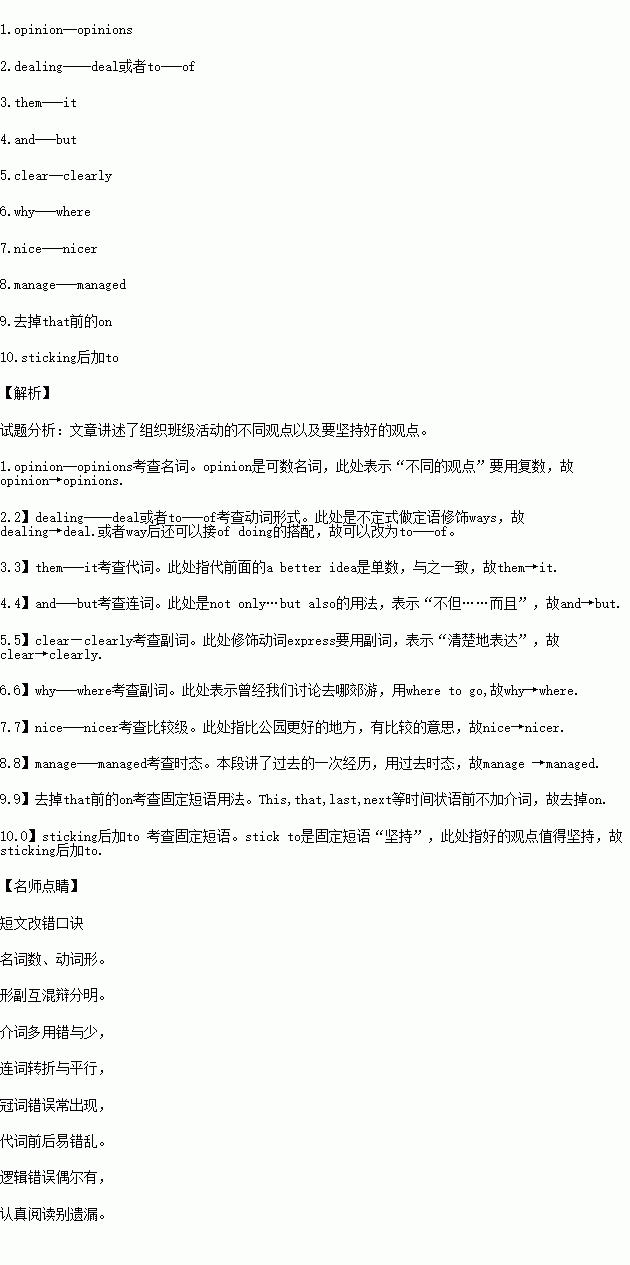��Ŀ����
�ٶ�Ӣ�������ʦҪ��ͬ��֮�佻��������,��������ͬ��д���������ġ��� �й���10�����Դ���,ÿ���������������ÿ��������漰һ�����ʵ����ӡ�ɾ�����ġ�
����:��ȱ�ʴ���һ��©�ַ���(��),����������д���üӵĴʡ�
ɾ��:�Ѷ���Ĵ���б��(������
��:�ڴ��Ĵ��»�һ����,���ڸô�����д���ĺ�Ĵʡ�
ע��:1.ÿ���������ľ�����һ��;
2.ֻ������10��,����(�ӵ�11����)���Ʒ�
We may have different opinion in organizing class activities. We may have various ways to dealing with such a situation. When I have a better idea, I would choose to stick to them. By doing so, I can not only share good ideas with others and also learn to express myself clear.
Once we were discussing why to go for an outing. Most of my classmates wanted to go to a park while I had an idea of going to a nice place. I manage to persuade my classmates into accepting my idea. We did have a good time on that day. Good opinions are worth sticking because they can benefit us all.
 ��һ������Ԫͬ�����ؾ�ϵ�д�
��һ������Ԫͬ�����ؾ�ϵ�д�
